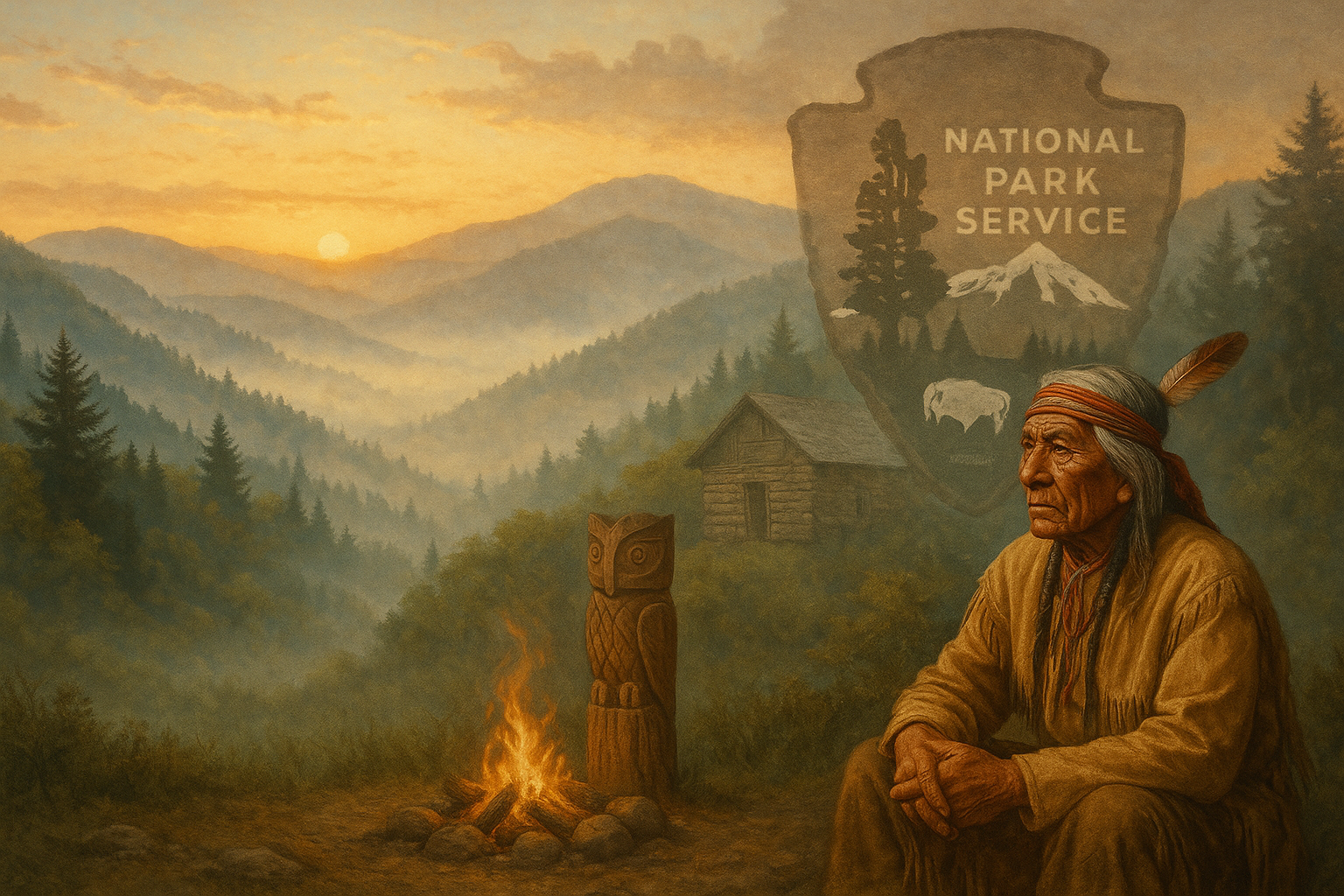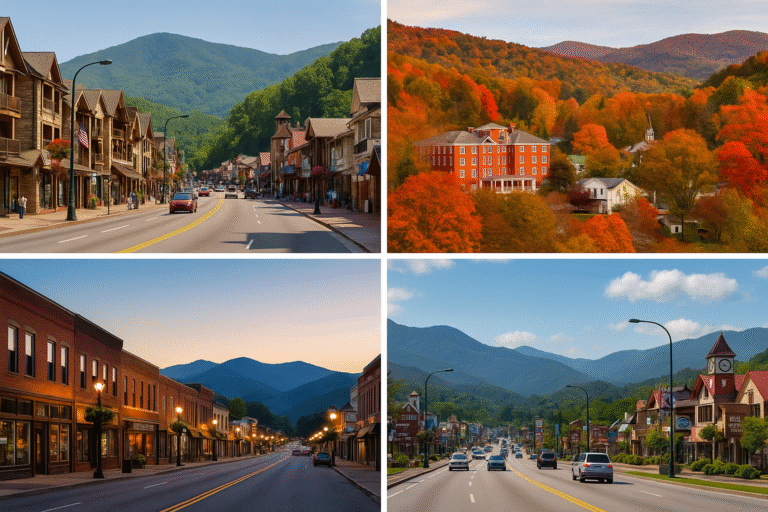
Long before the Great Smoky Mountains became one of America’s most beloved national parks, this ancient range was home to thriving cultures, settlers, and deep-rooted Appalachian traditions. Its mist-shrouded peaks hold stories that span centuries—from sacred Cherokee lands to homesteads carved out of wilderness, and eventually, to its preservation as a national treasure.
This article takes a deep dive into the rich, layered history of the Smokies, honoring the people, places, and events that shaped the land we know today.
The Cherokee and Indigenous Presence
The Smokies were home to the Cherokee people for thousands of years. These mountains—known to them as “Shaconage,” meaning “Place of the Blue Smoke”—were sacred, bountiful, and central to their spiritual and daily life.
Cherokee Life and Culture:
- Practiced agriculture, hunting, and fishing
- Built towns with council houses and sacred mounds
- Maintained extensive trails for trade and communication
Key Sites Today:
- Oconaluftee Indian Village (Cherokee, NC)
- Museum of the Cherokee People
- Mingo Falls (important cultural site)
The Trail of Tears:
In the 1830s, the U.S. government forcibly removed thousands of Cherokee from their ancestral lands. This dark chapter in American history, known as the Trail of Tears, saw many perish on the journey west. Some Cherokee evaded removal and stayed, forming what is now the Eastern Band of Cherokee Indians.
Early European Settlement
In the late 1700s and early 1800s, Scotch-Irish and German immigrants began settling the region. These pioneers built log cabins, farmed the land, and developed a distinctive Appalachian culture that blended folk traditions with frontier survival skills.
Life in the Smokies:
- Built self-sufficient homesteads with barns, mills, and gardens
- Practiced herbal medicine and folk crafts
- Passed down stories, ballads, and superstitions through oral tradition
Historic Structures Still Standing:
- Walker Sisters Cabin
- John Oliver Cabin (Cades Cove)
- Little Greenbrier Schoolhouse
The Logging Era
By the late 19th century, the Smokies’ vast forests became targets for commercial logging. Massive companies moved in, building railroads and removing entire mountainsides of virgin forest.
Impact of Logging:
- Clear-cutting led to erosion and habitat destruction
- Dozens of logging communities sprang up, such as Elkmont
- The environmental degradation sparked early conservation concerns
Remnants Today:
- Ghost town cabins in Elkmont
- Rail trails and old logging roads
Birth of a National Park
The movement to preserve the Smokies as a national park began in the 1920s. Unlike many parks that were federally owned, most of the land here was privately owned—requiring massive fundraising and negotiation.
Key Milestones:
- 1926: Congress authorized the park, but required land acquisition by the states
- 1930s: John D. Rockefeller Jr. donated $5 million to help buy land
- 1934: The park was officially established
- 1940: President Franklin D. Roosevelt dedicated the park at Newfound Gap
Notable Facts:
- Over 6,000 people were relocated, some by choice, others by condemnation
- Cemeteries, churches, and cultural sites remain within the park boundaries
The Civilian Conservation Corps (CCC)
During the Great Depression, the CCC played a major role in developing the park’s infrastructure. These young men built trails, bridges, fire towers, and campgrounds—much of which is still in use today.
CCC Contributions:
- Constructed 900+ miles of trails
- Built park roads, including parts of Newfound Gap Road
- Created visitor centers and shelters
Legacy: Their work preserved natural beauty while providing employment and skills training.
Preserving Nature and Culture
Since its creation, the Great Smoky Mountains National Park has become a symbol of biodiversity and cultural preservation. It remains one of the few parks that is free to enter, thanks to early agreements and state funding.
What Makes It Unique:
- UNESCO World Heritage Site (designated in 1983)
- Over 19,000 documented species of plants and animals
- Thousands of historic buildings preserved
Ongoing Challenges:
- Balancing tourism with conservation (over 12 million visitors annually)
- Protecting wildlife from human interference
- Preserving oral traditions, cemeteries, and cultural artifacts
Learn More On Your Visit
- Mountain Farm Museum & Mingus Mill: Live demonstrations of pioneer life
- Sugarlands Visitor Center: Exhibits on geology, wildlife, and early settlers
- Park ranger programs: Seasonal history talks and guided walks
- Cherokee, NC: Dive deeper into Native American history and culture
Final Thoughts
The history of the Smoky Mountains is a powerful blend of natural beauty, cultural resilience, and human determination. From the sacred homeland of the Cherokee to the struggles of Appalachian settlers, and from the devastation of logging to the triumph of preservation, this land tells a story worth remembering.
As you hike the trails, admire the views, or explore a forgotten homestead, take a moment to honor the past—and carry its stories forward.

